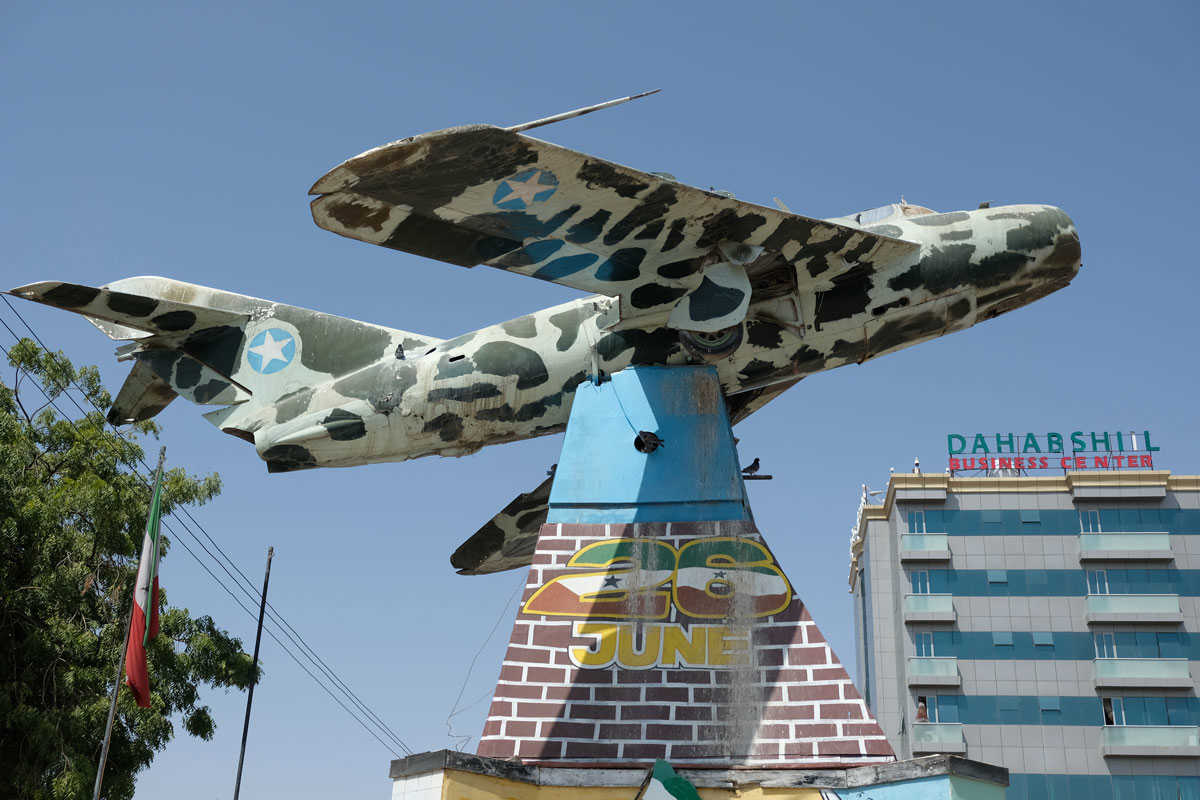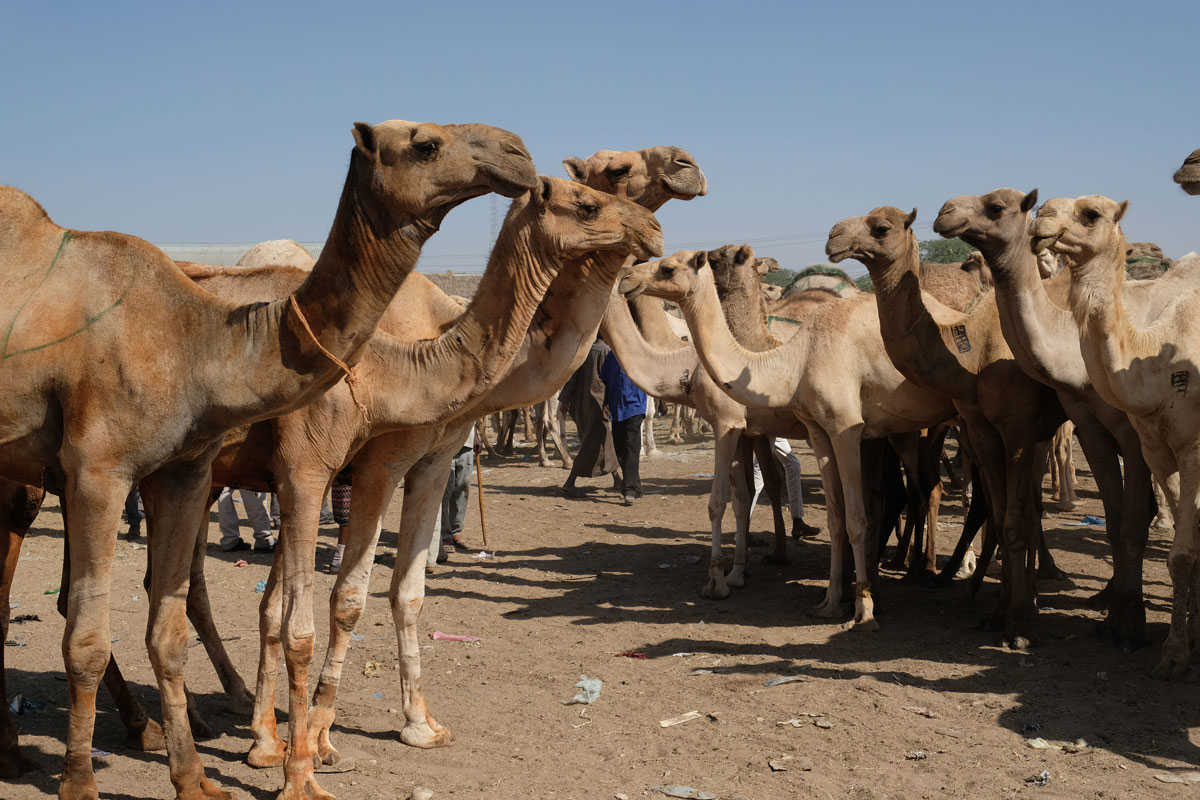The country that does not exist
A journey through Somaliland
There are still areas of the world off the beaten track that can excite and amaze. On the southern shore of the Gulf of Aden lies Somaliland and it is not on many tourist maps. In fact, it is not on any maps at all. According to the international community, Somaliland does not even exist. Despite that, Somaliland ticks almost all the boxes of statehood. It has its own currency, a reasonably effective bureaucracy, and a trained army and police force. The government maintains a respectable degree of control over its territory, and is by and large–peaceful.
The country should, however, not be confused with Somalia to the south, where bombings are a common occurrence, and the Al Shabab terrorist group is holding a grip on the country and her people. Travelling in Somaliland is, on the other hand, peaceful and safe, although very few tourists or travellers make it to the country. For a mere hundred dollars, you can get a visa at the Somaliland Diplomatic Mission in the Ethiopian capital of Addis Ababa. Two nights before my visit to the “embassy” a Molotov cocktail had been thrown into the diplomatic compound in the Bole area of Addis, causing a fire to parts of the building. The ambassador, who himself came out to greet the very few foreigners appearing for a visa application, told the visitors it was a local vandal, but considering the politics I think it is more to that story.
The visa, however, was a piece of cake. As long as I had all the requirements and filled in the form properly, the stamp in the passport was ready three hours later. My visa number was 997/17, which of course could suggest that less than a 1000 visas had been issued at this office during this year.
Travelling into the country had two options, either flying from Addis, or go overland–which I did.
On a hot and sunny day in October I crossed the border from the Somali region of Ethiopia, and stamping out and in was swift and efficient. Little did I, or my two American fellow travellers, know that we should be greeted by the very president himself. As we walked out of the immigration office, the streets were filled with cheering and proud locals, as he had come all the way from the capital Hargeisa to open the new immigration and customs office at the border town of Tog Wajale. The country is formerly known as British Somaliland, but “reunited” with the Italian occupied parts of Somalia when the colonisers left after World War II. When the Siad Barre led government of Somalia collapsed in 1991 Somaliland declared its independence. So far, the country has not been recognized by any other country in the world.
So, what is there to see in Somaliland? In Hargeisa, the capital–nothing really. It is a dusty, laid back town where the men sip their tea from roadside tea houses, while the hijab clad women shy away from foreigners with a camera. People are friendly and in need of talking to foreigners because of the isolation of the country. English and other foreign languages are frequently spoken, as people belonging to the diaspora are often on visits to family and friends. Walking around the town might make you a lot of friends, as everybody seems to be keen to talk. However, foreign women are advised to dress appropriately, which means covering their hair and other body parts. Somaliland is a Muslim country, which means that every morning, at 04:30, you will be awoken by the calling of prayer if your hotel is across from a mosque. It also means that no alcohol is available.
What is available–and legal–is khat. Almost everybody seems to be chewing the leaves of this plant at all times. Even bus drivers have their supply at the front of the bus. From what we were told there are several “brands” of khat, marked by a number like 725, 426 and the like. Going price apparently is 6000 shillings (or 60 cents) a bunch, although someone tried to sell us a bunch for two dollars, keen on letting us try the stuff.
The safety of visitors is high on the agenda of the Somaliland authorities. To travel outside of the capital any foreigner is required to travel with an armed guide–a soldier. Usually with an AK47 or something similar. A tour around the country including the guard and a driver can easily be booked at the Oriental Hotel in the centre of the capital. The hotel itself has a colonial feel about it as it was built in 1953 and has been in the ownership of the same family ever since. It was slightly damaged during the Somalian civil war, but restored to its former glory after independence. How few tourists this country have is apparent when my two American travel companions and I were the only foreigners staying at the Hotel Oriental for weeks. In some of the smaller towns people said that there are tourist appearing in the street once every three or four months. For sure we were the talk of the town as we wandered about in the heat.
At 07:30 on Monday morning our driver Hamid and armed guard Ali appeared at the hotel. We had decided to travel to the old capital of Berbera by the Gulf of Aden, visiting attractions on the way and in and around the town of Berbera. For a mere 398 dollars, the three of us had a van to ourselves, and we were to spend two nights in the coastal town of Berbera, visiting other places along the way and doing day trips.
The major attraction in
Somaliland would be the cave painting at Laas Geel, about 50 kilometres north
of the capital. Discovered only in 2002, these paintings are said to be at
least 5,000 years old, if not twice that old. The paintings were also described
in a BBC documentary by Simon Reeve back in 2005.
It is really Somaliland’s best-kept secret. Hidden in the deserts of Somaliland is an outcrop of rock paintings from one of the world’s oldest pastoral traditions. The caves of Laas Geel offer a glimpse into what the semi-autonomous country has to offer. If you like your art ancient, this is the place.
According to Deutsche Welle, Xavier Gutherz is the French archaeologist who brought Laas Geel to the world's attention in 2002. He said that “this is one of the most important rock art sites in eastern Africa for two reasons. The high number and quality of the panels of rock art, and the originality of the representations of cattle and characters.”
Locals apparently knew about the paintings, but avoided it as they didn’t understand it and were afraid. There are about twelve painted shelters scattered around a granitic outcrop that rises above the confluence of two 'wadis' or dry watercourses. When it rains they fill with water, giving the place its name Laas Geel, the "camel’s waterhole." This place is not overrun by foreign or local visitors, and we might well have been the only visitors for days. It was worth the 25 dollars entrance fee.
After spending a long hour at the caves, our journey slowly continued toward the coastal town of Berbera. The road is paved all the way and generally of good quality. Along the way one has the opportunity to watch animal life (both domesticated and wild), and our driver was more than happy to stop for having a closer look at antelopes, baboons, camels, goats, sheep, tortoises, and the only species of swine found in Somaliland, the desert warthog (Phacochoerus aethiopicus) that is endemic to the Horn of Africa.
Also along the way, is a number of police check points. Every time we approached a control post, Ali positioned his beret correctly. Ali seemed to be well known to all police officers, and we were quickly whisked through with no questions and no need to show our passport.
The coastal town of Berbera is described in the Bradt guide as a charmingly decayed Ottoman port and by Lonely Planet as a coastal town steeped in history. During the civil war in the late eighties the town was bombed almost flat, and walking through the “charming” dusty streets one notices that very little is done to repair the damages. As with the rest of Somaliland, there are not many tourists strolling around, in fact we noticed nobody but ourselves. This, of course, causes attention and curiosity. Having dozens of local young men following you wherever you step is the norm, and whoever speaks some kind of English will always try their luck at communication. At most, it is limited to questions like “where are you from?” and “what is your name?”
The age of present-day Berbera is difficult to determine. It might well have been one of the ports involved in the ancient trade between the east coast of Africa and Egypt. Today it serves as one of the trading ports for the land locked neighbouring country of Ethiopia–the other being Djibouti. According to the Bradt guide it is almost certainly synonymous with the port of Malao, described in the first century AD Periplus of the Erythraean Sea as “After Avalites there is another market town, better than this, called Malao”.
When choosing your accommodation, don’t trust the guides. After reading both the Bradt and Lonely Planet we were heading for Yaxye Hotel. Described as a clean, modern hotel with simple, tidy and spacious rooms for 25 dollars if you need air condition. The place is a dump, it is dirty and the common bathrooms stink and the plumbing surely wasn’t giving you water. Just a stone-throw away we found the modern Dahal Hotel, complete with hot water, air condition, a safe, and clean sheet for only a few dollars more.
Berbera is by the sea, and the climate is therefore hot and humid. Before 1941 it was also the capital of British Somaliland, but during the hot season from June to September the temperatures were unbearable to the British and they therefore established their summer headquarters in the hill town of Sheekh, around 80 kilometres to the south of Berbera and a lofty 1470 metres above sea level. Sheekh has a pleasant temperature, and it is dry. Although not a chic town, it proves a pleasant place for strolling along. The attraction is the curiosity of the locals, and again, surprisingly many people speak some kind of English.
If you have an extra morning in Hargeisa at your disposal, you could always make it to the livestock market at around eight in the morning–a three-dollar taxi ride or thirty minutes walking south of the city centre in the direction of the airport. A camel will fetch a price of one thousand dollar while a goat will be between 40 or 50 dollars, we were told at the livestock market outside the centre of Hargeisa.
Politically Somaliland enters into legal contracts (signing, for example, oil-exploration licences with foreign corporations), and it engages in diplomatic operations with the United Nations, the Arab League, the European Union and nations such as Britain, America, and Denmark, according to the Economist. But it has yet to receive official recognition from a single foreign government in the years since it declared independence in 1991. To the outside world, it is an autonomous region of Somalia, subject to the Somali Federal Government in Mogadishu. Why is it not a state?
The country is unlikely to become a tourist hotspot any time soon – and it has very few facilities – but it is peaceful and democratic. In short, even though the international community doesn’t recognise its independence, Somaliland is not Somalia!
[October 2017]






